Firenze is Florence in Italian. It’s my personal favourite Italian city. Sure, Rome (“Ro!-Ma”) has its awe-inspiring historical monuments and Venice (Venezia, pronounced “Ver-Ne!-Zia”) has it’s charming and idyllic canals, but Florence is the one city that seems to just have it all; from unmissable museums to stunning architecture to great food in perfect balance. A friend of mine is about to embark on a Florentine holiday and so I promised to write about my experience and adventure here. Pretty good timing too, as the movie “Inferno” based on Dan Brown’s novel of the same name starts playing in movie theatres. I read the book a couple of weeks before coming here, and it turned into my own little treasure hunt of sorts, hunting for specific locations and relics that were mentioned in the book. I recommend you do the same too; its wondrous and curiously satisfying when you finally piece together imagination and reality.
I think that you could reasonably cover off Florence in three days if you were constantly on the go, and could be fairly relaxed if you had four days to play around with. A first time visitor should aim to cover these:
1. Cattedrale di Santa Maria del Fiore (Il Duomo di Firenze)
Construction began in 1296 and completed in 1436. When it comes to the Cathedral of Santa Maria of Fiore (the Dome of Florence), there is no option. You HAVE to spectate this fascinating architecture – known here simply as the Duomo – both upfront and from afar. Close inspection gives you the opportunity to admire its intricate structure and design. The facade of white, green and pink truly make the building “pop”.
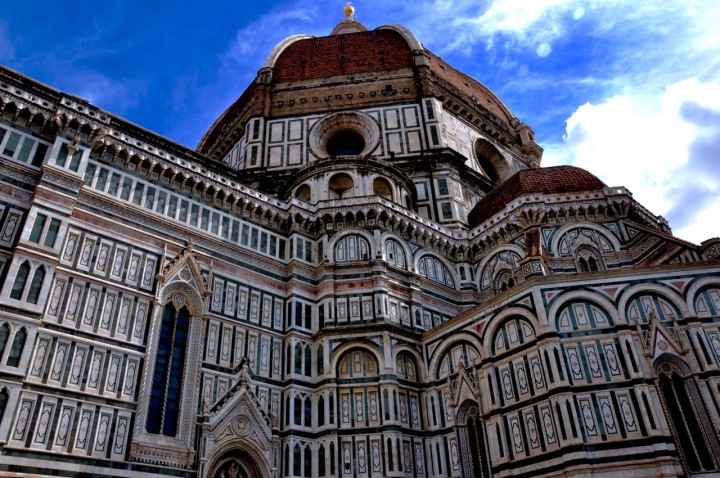
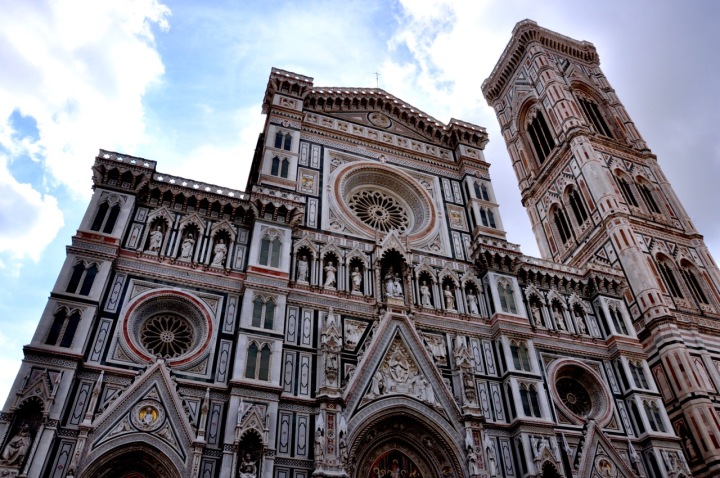
Then, you have to allow yourself the luxury of gazing at it from a distance (the perfect spot being from Piazzale Michelangelo, or Michelangelo Square). Indeed, this cathedral’s dome both dominates and defines the Florentine skyline, thereby forever imprinting Florence on your consciousness. If you had the time, I would suggest witnessing this remarkable view once during the day and another time in the evening. If you only had the time for one trip to Piazzale Michelangelo, try to make it at dusk and watch as the lights illuminate and magically awaken the city. I took a cab from my hotel here, which was one of the better decisions made as it saved me a lot of time and energy. I forget the exact fare!
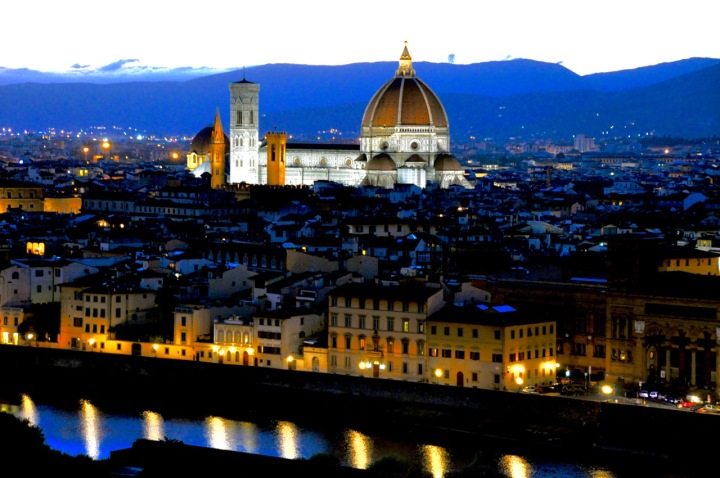
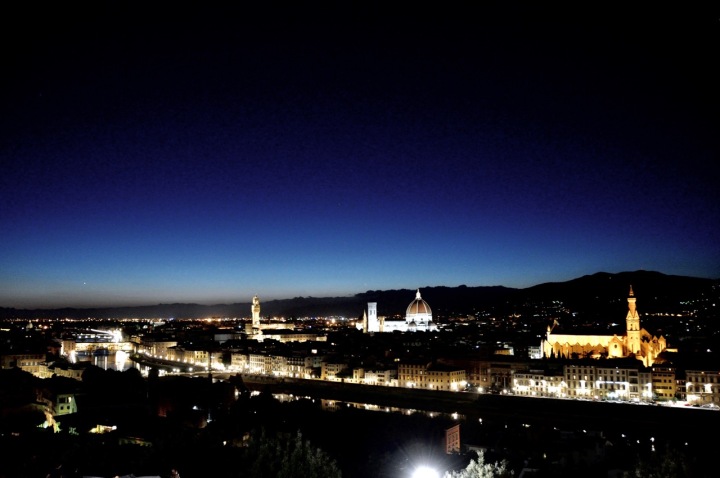
You should also spend some time exploring the inside of the Duomo. Something about Italian domes make them the perfect antidote to a fear of heights. I was absolutely worried of scaling this one but made the trip up anyway (you eventually get used to repeated experiences of “jelly knees” and “sinking gut”, you see). It was well worth it as these were some of my views:
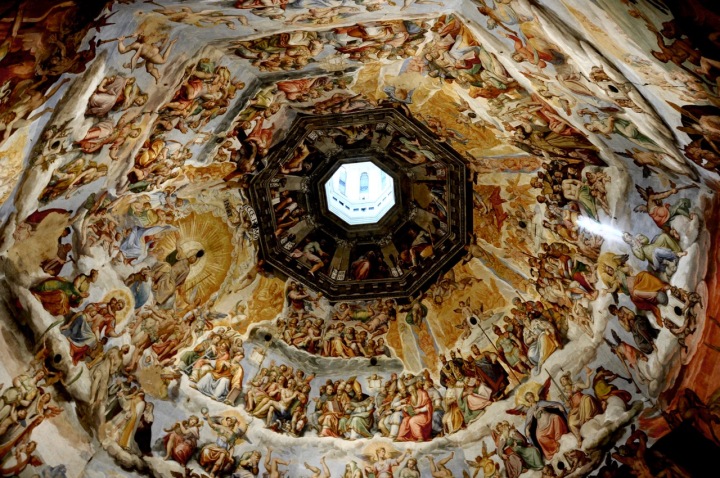
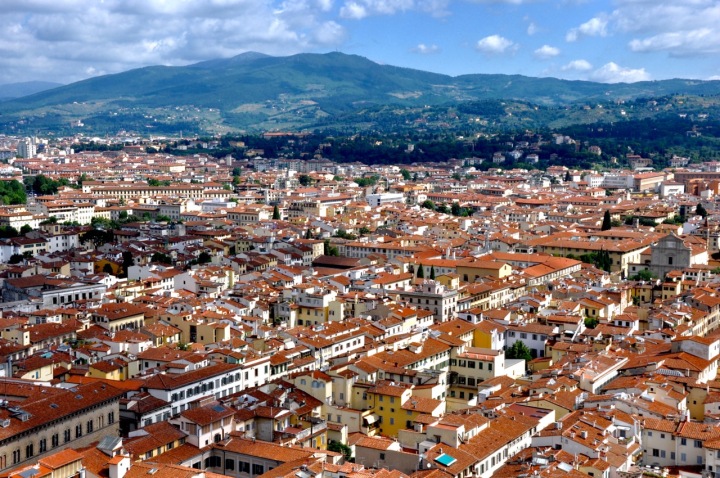
Finally, just adjacent although not quite part of the Duomo, is the Baptistery of St John (Battistero di San Giovanni). It’s doors, the Gates of Paradise, feature gilded bronze panels with intricate engraving. The way these panels gleam and shimmer in the sunlight is absolutely mesmerising. You have to appreciate the fact that these doors alone took its creator, Lorenzo Ghiberti, more than 20 years to complete! The Gates are mentioned specifically in the aforementioned Inferno novel too, but I shan’t mention anything lest I spoil the plot for you.
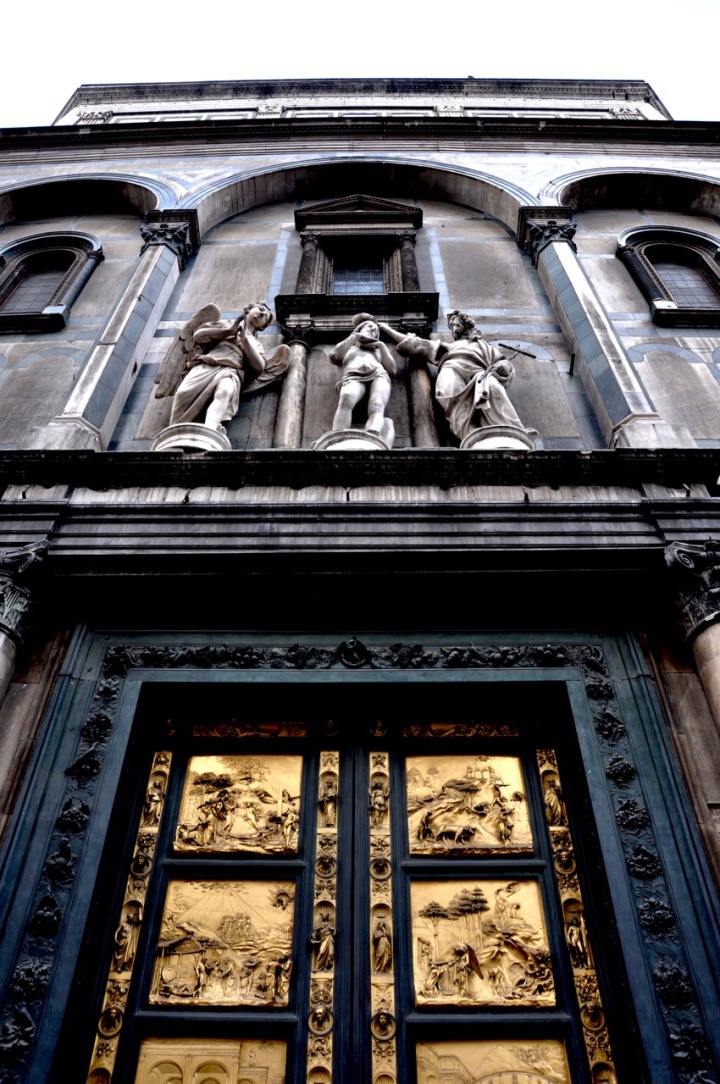
2. The museums
Florence can lay claim to being one of the best preserved locations in the world where you can find Renaissance art and architecture. So there really isn’t an end to your discovery if you’re into this sort of thing. If you’re here to check the boxes, there are really two museums you simply cannot miss in Florence. The first is the Galleria dell’ Academia, where upon entry you’ll see the world famous sculpture displayed in all its glory (no pun intended). David is much larger than you expect him to be too (again, no pun intended – is it just me or can you not write about David without evoking any double entendre?). As you continue to admire Michelangelo’s famed work, you’d probably also gradually realise just how perfect this sculpture is.
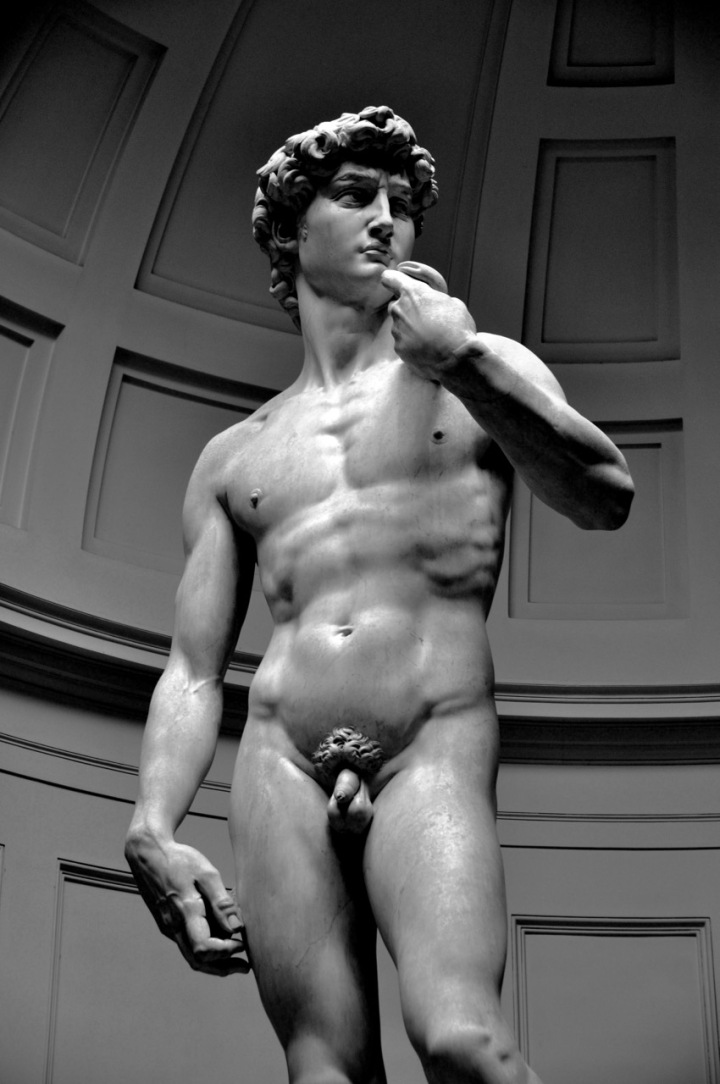
The other place most tourists flock to is the Galleria deli Uffizi. Construction was completed in 1581 and used to be offices for Florence’s magistrates (hence “Uffizi”, which means offices). Today it houses many pieces of world famous art. It’s layout is rather interesting, as you work around two immensely long corridors (as if you’re tracing the perimeter of an incredibly long rectangle). I am no art aficionado and I readily admit the one that caught my eye and indeed, recognised, was Botticelli’s The Birth of Venus. There was strictly no photography allowed here so click on the link if you really do want to be reminded of Botticelli’s renowned masterpiece. Feel free to scroll through the other more well-known pieces here.
For both of these museums, I highly recommended purchasing your tickets in advance. Otherwise, you’d be risking standing in line for a good number of hours to buy the tickets, and then queueing again to enter. With tickets in hand, I still waited a good 45 minutes for my turn to enter. Uffizi was particularly bad.
3. Two more iconic Florentine monuments
These two other monuments feature heavily in Inferno too and I wouldn’t have been as persuaded to drop by had it not been for this book.
Palazzo Vecchio is a necessity. Have a look here for ideas to explore. You could also do what I did, which in hindsight may or may not have been such a great idea. You see, Palazzo Vecchio closes at 11pm everyday of the week other than Thursdays. I probably checked in around 9.30pm at night and I was on the hunt for two things: the Salone dei Cinquecento and Dante’s death mask. On one hand, this was truly a treat because you get to marvel at the architecture and art pieces without the hustle and bustle of the crowd, and if you like your photos looking good, you certainly won’t find the random stray head photo-bombing your otherwise perfectly framed picture. On the other, the entire place was very quiet and atmospheric. Everything seemed deserted, and all the lighting in the world never quite seemed enough to lift the place from the dimness which so wholly enveloped it. In one word – spooky. Wooden panels that you treat on seemed to creak louder than ever, and exhibits with hundreds of years of history felt alive. I wouldn’t ever want to be locked up here for a night ala Night at the Museum. I also found Dante’s death mask and I probably spent no more than 5 seconds looking at it. No pictures of it were attempted whatsoever.
I did take these amazing photos:
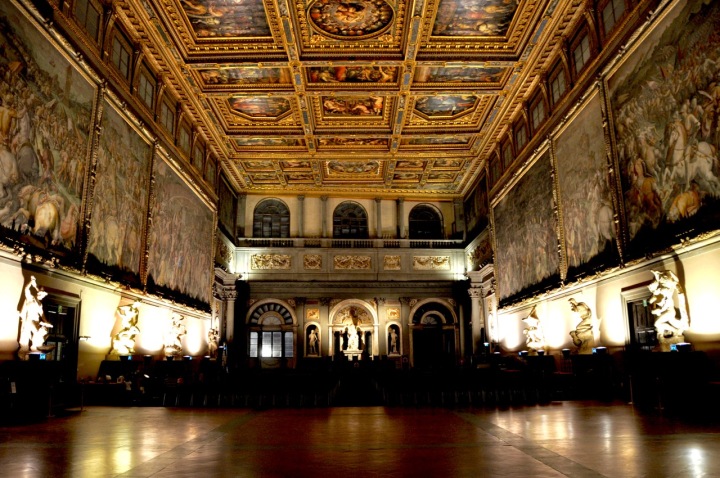
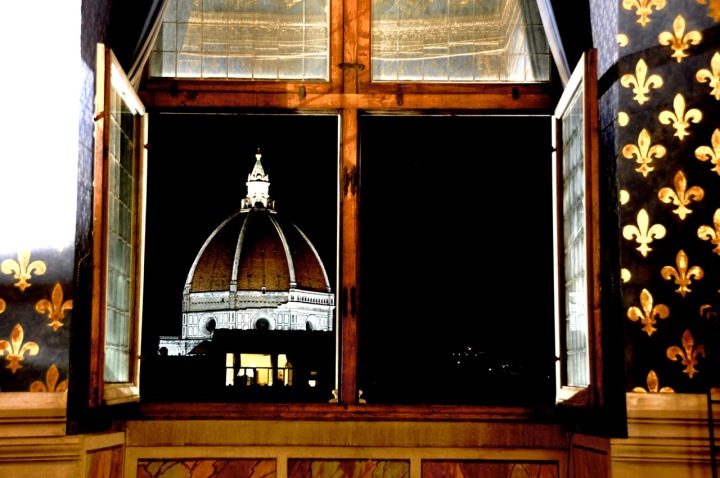
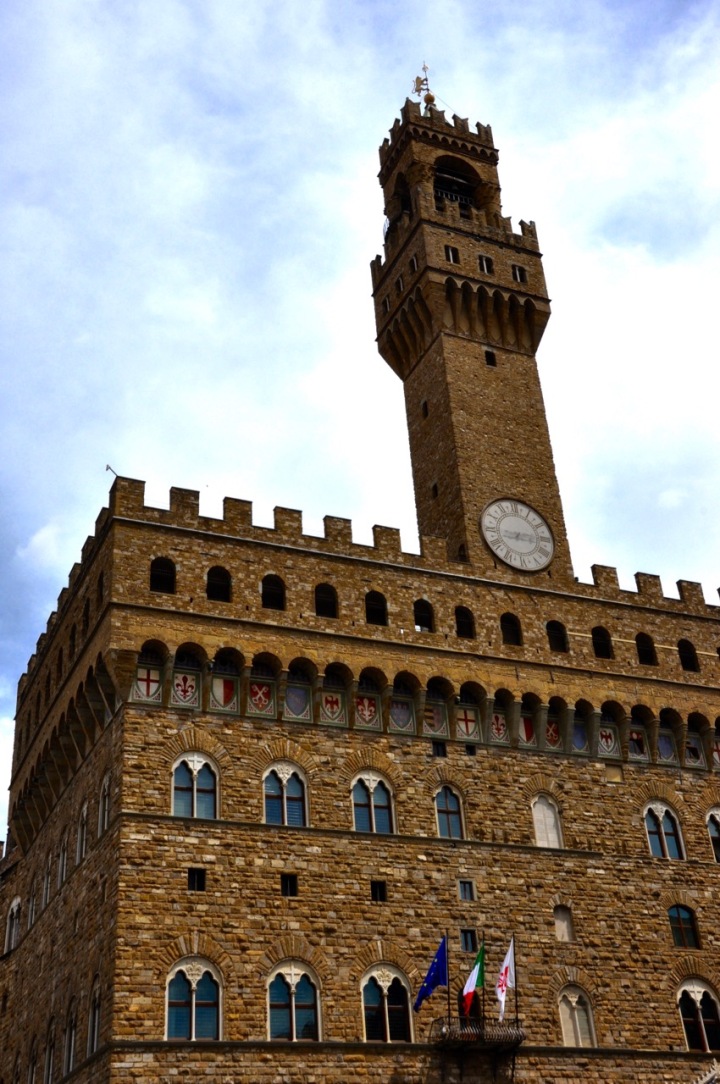
Next up is the Boboli Gardens, a rather vast park which sits behind the Palazzo Pitti. I think that the park, rather than the palace, is an essential stop because you get to see unique Tuscan landscape, which is amazing. To get here (presumably by foot, from the city centre) you’d have to walk across Ponte Vecchio and the journey exposes you to many Florentine sights which you’d otherwise miss out on. It’s a great place to just sit on the walled barricades and let your legs dangle as you look out at the soothing and tranquil greenery.
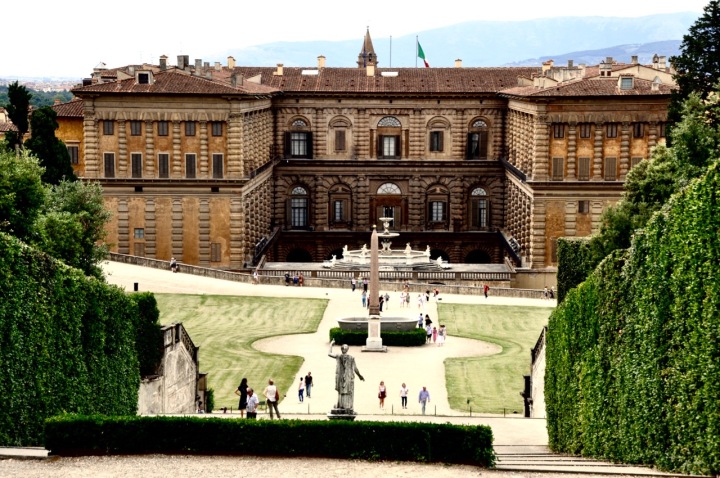
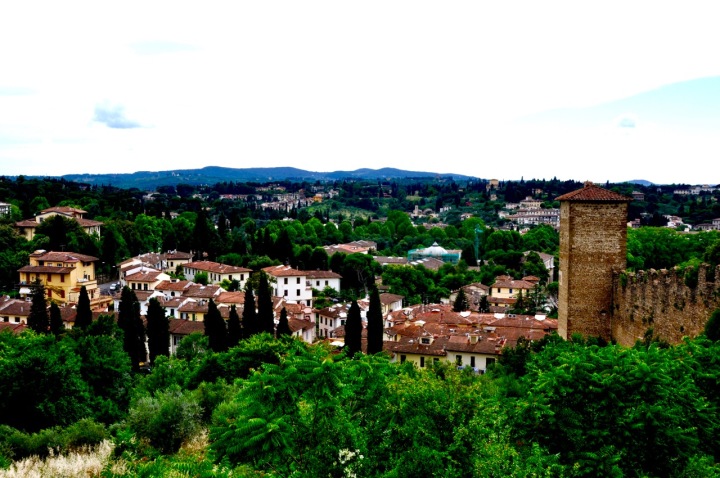
4. Ponte Vecchio over River Arno
There’s so much written about the bridge already, that really all you have to do is Google it to find out more. Let me take the first step for you here. Of course, no trip to Florence would be complete without:
- setting foot on the bridge, and being in and amongst the hustle and bustle (it is crammed with tourists especially in summer). It is a marketplace after all and the atmosphere is really quite something
- looking at it from Piazzale Michelangelo (which should be a stop on your itinerary anyway because if you want views, this is easily the number one spot) BOTH during the day and night – see photos below
- looking at it from Ponte all Grazie for what I think must be one of the most iconic Florentine views (apart from the Duomo)
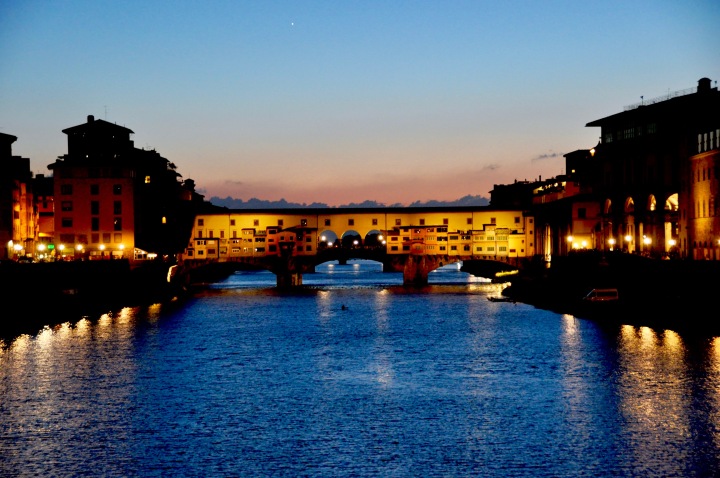
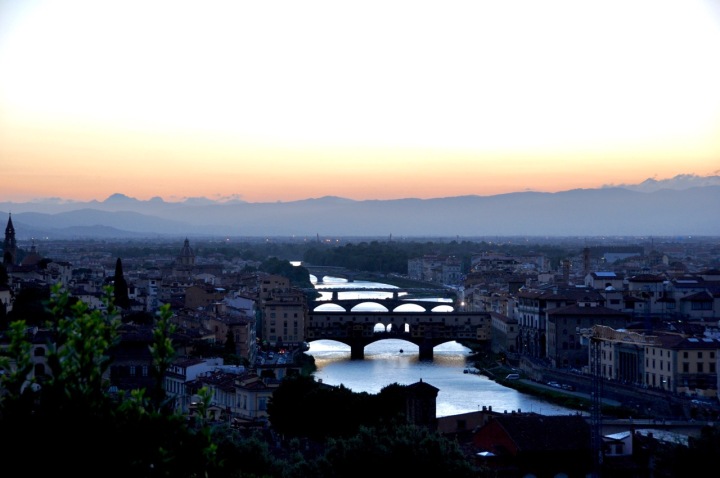
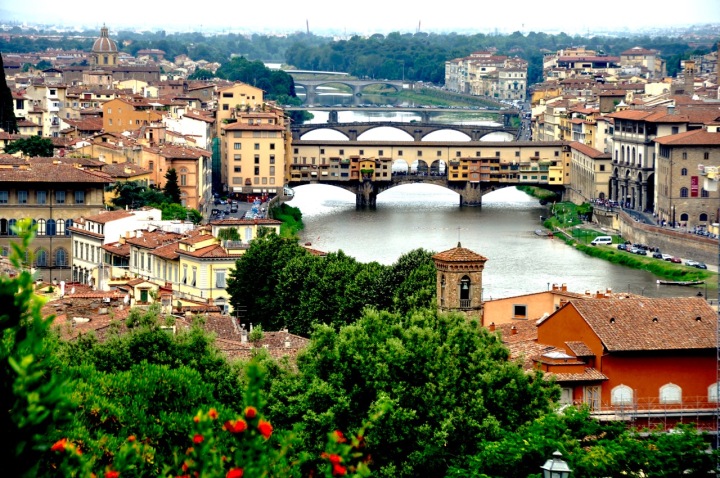
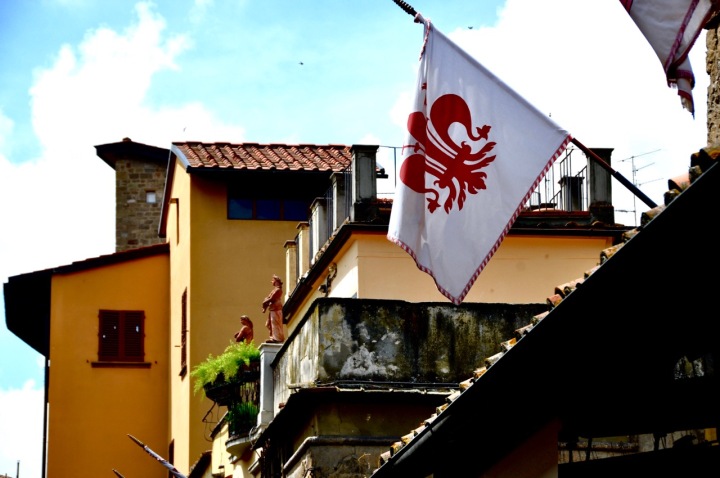
5. A side trip to Cinque Terre
I can’t recommend highly enough spending a day at Cinque Terre (literally the 5 lands, but really the 5 villages). Being at Florence is possibly putting yourself as incredibly close as possible to this remarkable place. They are five seaside villages and the views are absolutely breathtaking. I didn’t stay over and did a day trip, but you could if you want to although I understand that it may get quite difficult to get accommodation depending on when you’re travelling. I think that people may choose to do as much or as little here based on the time they had. We came to Cinque Terre from La Spezia (the train station from which you took trains to each of the 5 villages – think of them as being 5 in a row – which is how it would be if you are coming from Florence) and I spent most of my Cinque Terre time at the following villages (in this exact order) and found it to be just perfect to experience and see it.
- Manarola (2nd of 5) is probably the village that most people flock to because arguably Cinque Terre has come to be represented by its vista. Here’s where you probably should plan to spend the longest, for there is a slight trek to get to the viewing point for the iconic view.
- Vernazza (3rd of 5) is equally astounding, being the only village of the five with its own harbour. This village is probably the most explorable of them all too, with narrow winding lanes snaking between high pastel coloured buildings. We had lunch here at one of the harbour-side restaurants. Food was traditional and good. Street food was more exciting, which included my very first experience eating gelato in a bun (brioche con gelato).
- Monterosso al Mare (5th of 5) is the most commercial of all, and this is probably where you’d find yourself sat by the beach, drinking a nice cold glass of Italian beer.
Allow me to tempt you:
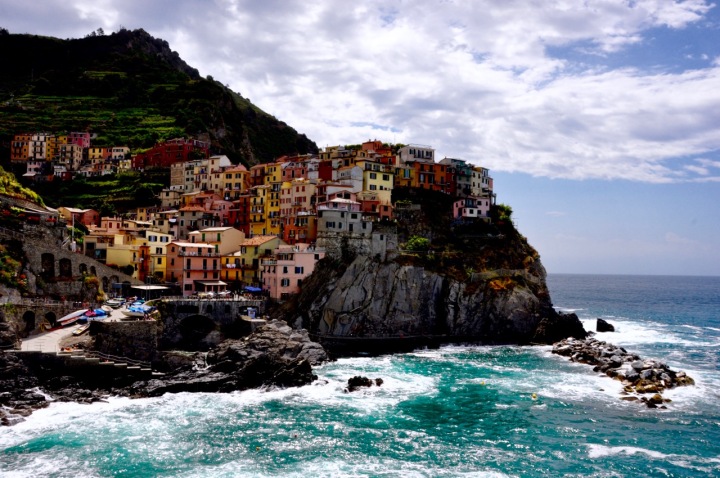
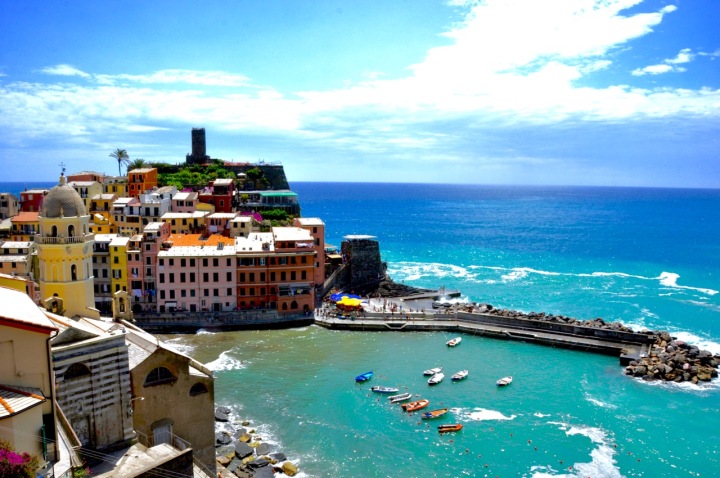
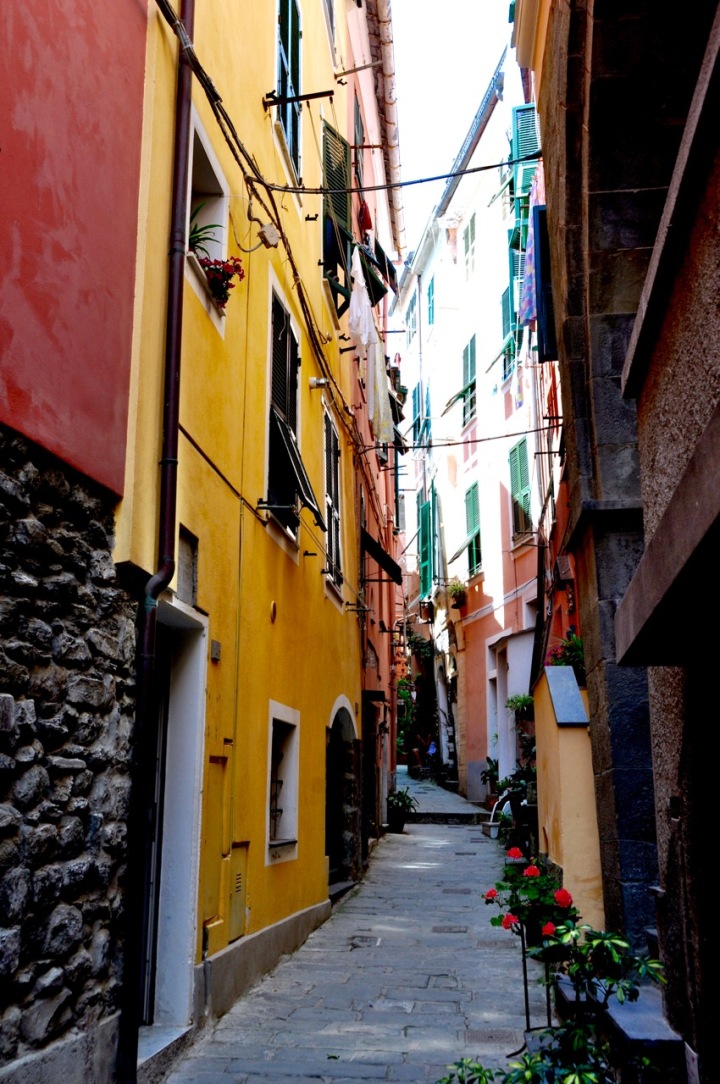
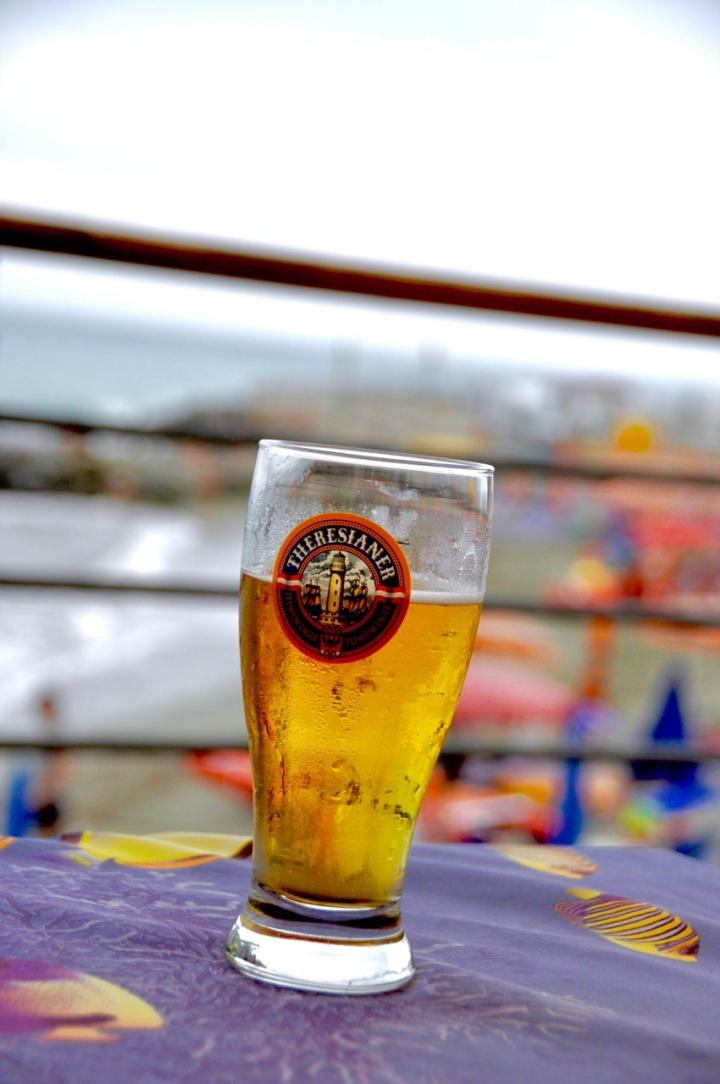
How to get to Cinque Terre? I joined a day tour from Florence organised by bus2alps. It worked well for me because it was affordable, it had a tour leader with knowledge of how to get here and provided us some history of the area during the bus ride, and most importantly, the flexibility of hiking with the group or breaking off and doing whatever I wanted and meeting up to take the round trip back to Florence. I highly recommend it, see here.
Having stopped by Cinque Terre really made my trip to Florence complete, so I hope you make it here too.
6. Italian food! Italian wine!
I will never stop raving about Italian food in Florence. You know how people say pictures say a thousand words? Pictures also make my mouth water and stomach rumble:













I think you can make out most of the names of places I ate at from the photos above, but for your reference these are:
- Il Vinaino: order as many pasta dishes as you could possibly eat
- Osterio del Cinghiale Bianco: everything was delicious
- All’Antico Vinaio: delicious Italian sandwiches and a glass of wine for 2 Euros
- Amici di Ponte Vecchio da Stefano: pizza to die for (figuratively speaking of course)
- Trattoria Mario: I didn’t get to eat here because the queue was simply too long. Apparently the bisteco Fiorentino (Florentine steak) brings people from all corners of the world
- Trattoria Casalinga: pasta once again, but so very good! They do the Florentine steak too.
- Gelateria della Passera: hands down the best gelato in Florence, in a quaint little square you could easily while away a lazy hour
- Grom: famous for gelato and worth a try
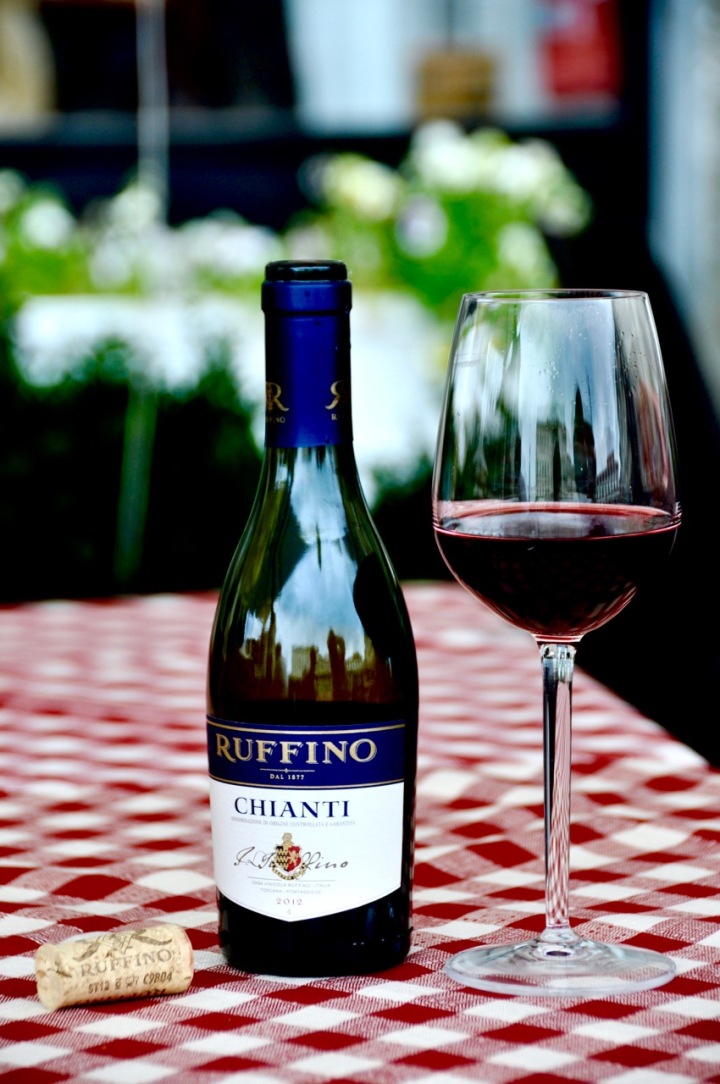
Do note that I have mainly gone for affordable or cheapish eats. I’m sure you’d be able to find fine dining in Florence too if you’re willing to spend a bit more.
As a perfectly memorable Italian treat, do look for a grocery store and buy a fresh tomato for a snack. It would be the best tomato you have ever had in your life, I assure you.
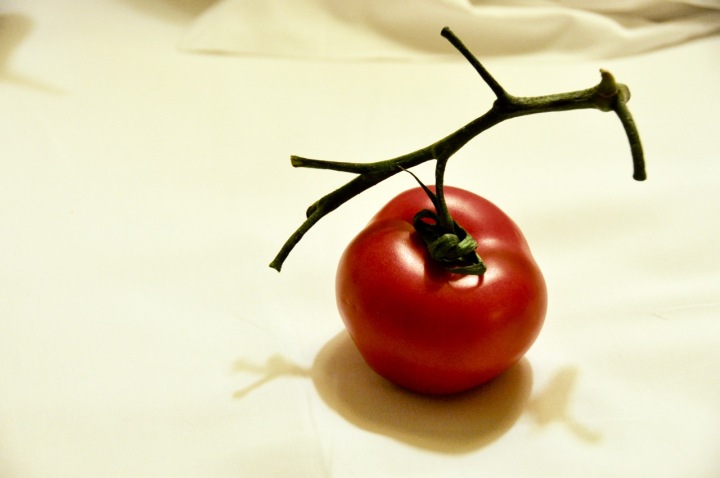
7. Some observations
I hope you’re now armed and ready to explore and experience this wondrous city. A few things to bear in mind:
- Because Florence is so ancient, when it comes to hotels, don’t bother looking for any glitzy or contemporary abode. Pick a clean one that seems rather popular and focus on location. I would try to stay near the train station wherever possible: Firenze Santa Maria Novella. It’s super easy to travel especially if you’re thinking of taking side trips to Pisa or Cinque Terre.
- I’ve shared some insight on Cinque Terre above. As for Pisa, it’s only real attraction is the Leaning Tower which you could stop by for an afternoon on the way to the airport (here’s where everyone automatically snaps into position for a photo where they appear to be doing something with the tower e.g. holding it up with one hand. It’s really quite hilarious, then, to take a photo of them deliberately misaligning them – the Internet is full of these. Another joke I’ve seen done is to purposely “straighten” the tower in photographs so you couldn’t tell that it was leaning!)
- If you can, book ahead at any restaurant you intend to dine at (if they take reservations). Otherwise, expect to queue everywhere and so be sure to allot time for meals – they are not necessarily stop and go even if you are buying something as simple as pizza or a sandwich.
- See if you find a bronze statue of a wild boar (called Il Porcelain which means “little piglet”). If you do, try throwing a coin into the boar’s jaws, and if the coin slides out and falls through the grating (note: it’s a small one) under the boar, you’re in for good luck! Rub the snout of the board to seal your return to Florence.
- Look around you in the city for the little things too. I particularly liked finding the fleur de lis, the city’s insignia. I also have a fascination with road signs! Finally, it’s hard to really tell if there are any Florentines around – chances are, if someone carries a backpack or has a camera around their neck, they could be just like you – a tourist!





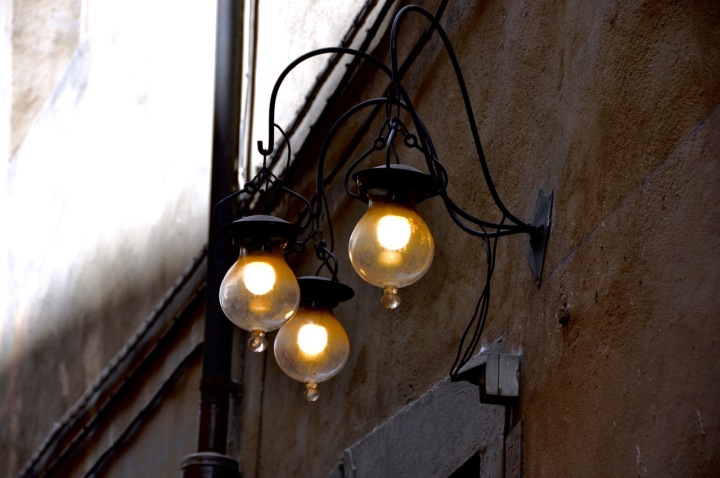
I do think that a Florentine holiday could be every bit as good as a Roman one, if not better. Divertiti in vacanza and ciao for now!
